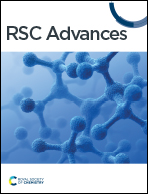Advances in boron nitride-based nanomaterials for environmental remediation and water splitting: a review
Abstract
Boron nitride has gained wide-spread attention globally owing to its outstanding characteristics, such as a large surface area, high thermal resistivity, great mechanical strength, low density, and corrosion resistance. This review compiles state-of-the-art synthesis techniques, including mechanical exfoliation, chemical exfoliation, chemical vapour deposition (CVD), and green synthesis for the fabrication of hexagonal boron nitride and its composites, their structural and chemical properties, and their applications in hydrogen production and environmental remediation. Additionally, the adsorptive and photocatalytic properties of boron nitride-based nanocomposites for the removal of heavy metals, dyes, and pharmaceuticals from contaminated waters are discussed. Lastly, the scope of future research, including the facile synthesis and large-scale applicability of boron nitride-based nanomaterials for wastewater treatment, is presented. This review is expected to deliver preliminary knowledge of the present state and properties of boron nitride-based nanomaterials, encouraging the future study and development of these materials for their applications in various fields.

- This article is part of the themed collection: 2024 Reviews in RSC Advances


 Please wait while we load your content...
Please wait while we load your content...